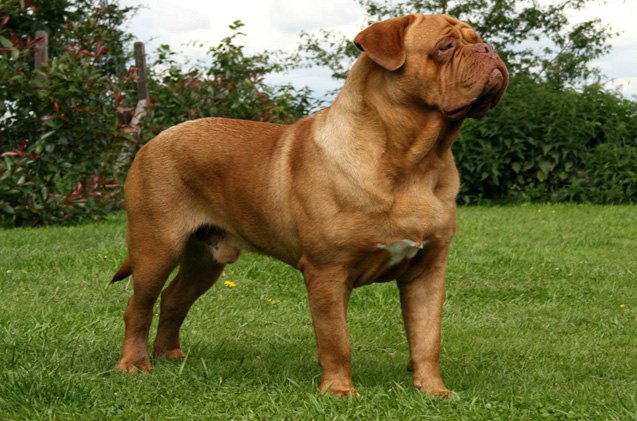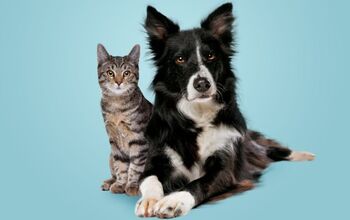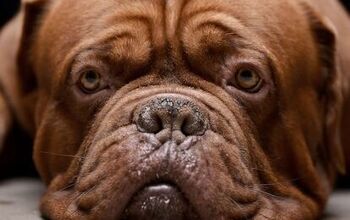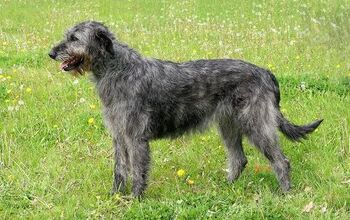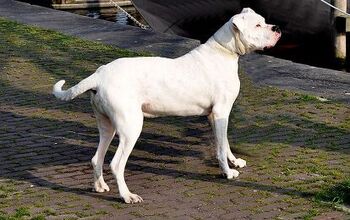Dogue De Bordeaux


About Dogue De Bordeaux
An ideal guard dog for anyone with experience in handling and training dogs, the Dogue de Bordeaux – also known as the French Mastiff or the Bordeaux Bulldog – has the versatility of being a strong, fearless guard but also having gentleness around the house, including with children. Like other guard dogs, it will need to be raised in a way that socializes it with other dogs and with people so that it understands who represents a real threat and who does not.
As a large dog, it can be intimidating for some, especially children, but generally the personality of this dog is very calm provided it doesn’t feel anyone is infringing on the household. Teaching the dog to be relaxed around strangers you welcome will be important, and you just may find that this unique, heavy dog becomes a neighborhood hit. And you’ll definitely feel safe with a Dogue de Bordeaux in your presence – so that’s not an issue. When many people imagine French dogs, the Dogue de Bordeaux is not what they have in mind. But when it comes to the breed you’re interested in, this might be exactly what you had in mind. Let’s learn more about this “Bordeaux Bulldog.”
The Dogue de Bordeaux has the versatility of being a strong, fearless guard but also having gentleness around the house.
The translation of Dogue de Bordeaux could perhaps be described as “Bordeaux Mastiff,” but it is also known as a French Mastiff in areas outside of the country, particularly in America. As for its historical origins, the translations are not so clear. Many think the Dogue de Bordeaux could have descended from the Tibetan Mastiff and the Bulldog – which would certainly make the nickname “Bordeaux Bulldog” more appropriate. Dogs in the Middle Ages in the Aquitaine region may have also been ancestors to the modern Dogue de Bordeaux, and by the end of the Middle Ages, its use as a companion and guard dog was more frequent.
Although the Dogue de Bordeaux took a heavy hit during the French Revolution, it regained its numbers throughout the years and a man named Raymond Triquet helped it to survive by taking the breed under his wing.
The dog’s very tough history includes use in war, guardianship, and even training in hunting large game like bears, bulls, and jaguars. It was only recognized by the American Kennel Club in 2008.
Pedigree
The pedigree is a bit difficult to decipher with the Dogue de Bordeaux, which is not uncommon for breeds that date back to the Middle Ages. As mentioned, breeds like the Bulldog and the Tibetan Mastiff might have had a hand in developing the Dogue de Bordeaux. Other breeds near the Aquitaine region in the Middle Ages, such as Spanish dogs from places like Burgos, would have undoubtedly played a role in this breed’s development.
An exceptionally large and heavy dog, this breed requires a similarly large diet, with normal monitoring of weight fluctuations like any other dog. This dog, however, does not require an exceptionally large diet because it’s not a very vigorous exerciser.
Calm leadership that places clear boundaries on the Dogue de Bordeaux will be important.
Like all large dogs, training with the Dogue de Bordeaux should be handled with care. You will undoubtedly notice the fierce guardian instincts in this dog, and you’ll feel quite safe in its presence, but care should be taken so that the dog does not become suspicious of all strangers and all other dogs. Calm leadership that places clear boundaries on the Dogue de Bordeaux will be important, as will ensuring a pecking order that includes the dog in the family, but makes sure the dog understands its place below every human.
Weighing up to 145 pounds, this is not the type of dog you’ll be able to shrug off very easily. Luckily, the personality of the Dogue de Bordeaux is not overly aggressive to its owners if properly raised.
Temperament / Behavior
This is an ideal guard dog because it is fearless and ferocious against intruders but can be calm and friendly with every member of the household, including children. Though anyone with a large dog will have to be wary about its relationship with children, the Dogue de Bordeaux is not considered an especially high-risk dog for dealing with them.
Like all dogs, clear leadership must take place on your part if they’re going to have a healthy understanding of their role in your household. These are generally “indoor” dogs that are perfectly happy without a huge country estate to roam around in.
Hip dysplasia, a frequent joint issue in larger dogs, will obviously be a problem, as are a few other issues such as heart problems and even epilepsy.
A life expectancy of around 10-12 years is not unusual for a dog of this size.
This being a larger dog, a long walk will be required to ensure it gets its daily exercise, but the importance of exercise is also an emphasis on its psychological benefits. This is especially important to this breed so that it doesn’t store any pent up energy. Since this is a dog that sometimes forgets its own strength and weight, making sure it is good tired out will be essential to keeping it healthy and happy around the house.
This is an ideal guard dog because it is fearless and ferocious against intruders but can be calm and friendly with every member of the household.
Only recognizing the breed in 2008, the American Kennel Club says: “A powerful and muscular French breed, the Dogue de Bordeaux is a molossoid (mastiff-type dog), “dogue” meaning Mastiff in French. A massive head and stocky body are trademarks of the breed. Americans were introduced to the Dogue de Bordeaux when he appeared as drooling, messy “Hooch” in the 1989 Tom Hanks’ film, Turner and Hooch.”
Minimal grooming required and not being a shedder is music to the ears of dog owners who hate a shaggy, shedding dog.
As with many dogs, raising these from a puppy means you’ll want to set clear boundaries while exposing them to the outside world to get a healthy attitude toward strangers and other dogs.

Amy Tokic, Editor of PetGuide.com, is a passionate animal lover and proud pet parent of Oscar, a Shih Tzu/Chihuahua cross, and Zed, a Japanese Chin. Her love of animals began in kindergarten, when she brought her stuffed dog Snoopy into class with her every day. Now, she writes about her adventures in pet ownership and tirelessly researches products, news and health related issues she can share with other animal enthusiasts. In her free time, Amy loves perusing used book and record stores, obsessing over the latest pet products available and chasing squirrels with wild abandon (a habit attributed to spending too much time with her pooches).
More by Amy Tokic



